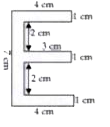Fill in the blanks:
1 is neither____ nor___
The correct Answer is:prime number
To solve the question "1 is neither ____ nor ____", we need to identify the categories that the number 1 does not belong to.
1. Understanding Prime Numbers:
- A prime number is defined as a number that has exactly two distinct positive divisors: 1 and itself.
- For example, the number 2 has divisors 1 and 2, making it a prime number.
Hint: Recall the definition of prime numbers and think about how many divisors the number 1 has.
2. Analyzing the Number 1:
- The number 1 has only one divisor, which is itself (1).
- Since it does not meet the requirement of having exactly two distinct divisors, it is not a prime number.
Hint: Consider how many divisors the number 1 has compared to the definition of prime numbers.
3. Understanding Composite Numbers:
- A composite number is defined as a number that has more than two distinct positive divisors.
- For example, the number 4 has divisors 1, 2, and 4, making it a composite number.
Hint: Think about what it means for a number to have more than two divisors.
4. Conclusion:
- Since 1 does not have two distinct divisors, it cannot be classified as a prime number.
- Additionally, since it does not have more than two divisors, it cannot be classified as a composite number either.
Final Answer: Therefore, we fill in the blanks as follows:
"1 is neither prime nor composite."
- A prime number is defined as a number that has exactly two distinct positive divisors: 1 and itself.
- For example, the number 2 has divisors 1 and 2, making it a prime number.
- The number 1 has only one divisor, which is itself (1).
- Since it does not meet the requirement of having exactly two distinct divisors, it is not a prime number.
- A composite number is defined as a number that has more than two distinct positive divisors.
- For example, the number 4 has divisors 1, 2, and 4, making it a composite number.
- Since 1 does not have two distinct divisors, it cannot be classified as a prime number.
- Additionally, since it does not have more than two divisors, it cannot be classified as a composite number either.
"1 is neither prime nor composite."
Topper's Solved these Questions
- PLAYING WITH NUMBERSBook:MTG IIT JEE FOUNDATIONChapter:PLAYING WITH NUMBERSExercise:NCERT SECTION (EXERCISE 3.3)
Explore 31 Videos
- PLAYING WITH NUMBERSBook:MTG IIT JEE FOUNDATIONChapter:PLAYING WITH NUMBERSExercise:NCERT SECTION (EXERCISE 3.4)
Explore 17 Videos
- PLAYING WITH NUMBERSBook:MTG IIT JEE FOUNDATIONChapter:PLAYING WITH NUMBERSExercise:NCERT SECTION (EXERCISE 3.1)
Explore 14 Videos
- MENSURATIONBook:MTG IIT JEE FOUNDATIONChapter:MENSURATIONExercise:Olympiad/HOTS Corner
Explore 20 Videos
- PRACTICAL GEOMETRY Book:MTG IIT JEE FOUNDATIONChapter:PRACTICAL GEOMETRY Exercise:EXERCISE (SUBJECTIVE PROBLEMS) (LONG ANSWER TYPE )
Explore 5 Videos
Similar Questions
Using divisibility tests, determine which of the following numbers are divisible by 2; by 3; by 4; by 5; by 6; by 8; by 9; by 10 ; by 11 (say, yes or no):
View SolutionFind the common factors of : (a) 20 and 28 (b) 15 and 25 (c) 35 and 50 (d) 56 and 120
View SolutionWrite all the factors of the following numbers :
24
View SolutionFind the area of the following figure (not drawn to scale) by splitting into rectangles.

View SolutionDraw angle of 67.5∘ using compasses.
View SolutionFill in the Blanks | Part 1
View SolutionFill in the blanks: br The function f(x)=e2x is increasing on R…….
View Solutionरिक्त स्थानों को भरिये :
1 + . . . . = 0
View Solutionखाली जगहों को भरे-
……÷(−16)=1
View Solutionरिक्त स्थान भरिए :
2........=1
View Solutionरिक्त स्थानों की पूर्ति कीजिये :
(−75)÷......=−1
View Solutionरिक्त स्थानों की पूर्ति कीजिये :
(−206)÷......=1
View Solutionरिक्त स्थानों की पूर्ति कीजिये :
.....÷1=−87
View Solutionरिक्त स्थानों की पूर्ति कीजिये :
.....÷48=−1
View SolutionFill the blanks ___ -: 1=-49.
View Solutionरिकाम्या जागा भरा :1 मिक्रोएम्पियर = A
View Solution